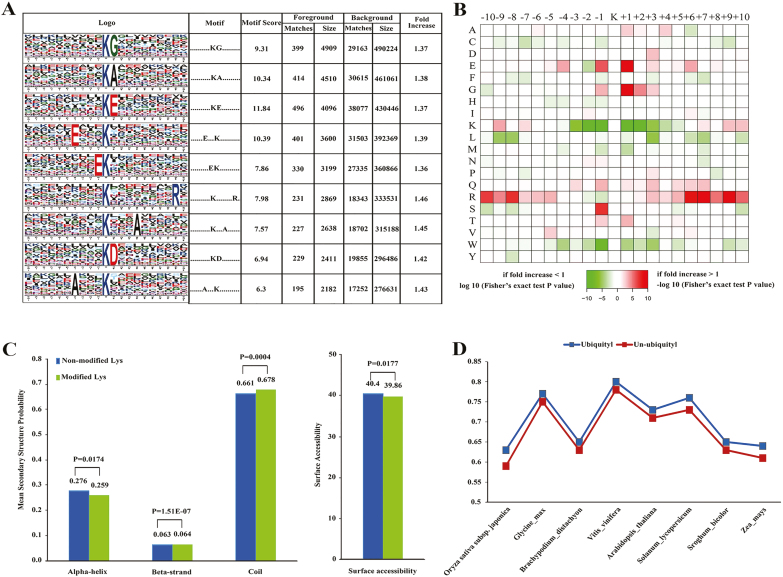Fig. 3.
Motif analysis of identified Kub sites. (A) Ubiquitination motifs and the conservation of Kub sites. The height of each letter corresponds to the frequency of that amino acid residue at that position. The central K refers to the ubiquitinated Lys. (B) Amino acid sequence properties of ubiquitylation sites. The heat map shows significant position-specific under-representation or over-representation of amino acids flanking the modification sites. (C) Probabilities of different secondary structures (coil, α-helix, and β-strand) of modified and non-modified Lys residues were compared with the secondary structure probabilities of all Lys residues in this study. (D) Evolutionary conservation of ubiquitylated and non-ubiquitylated Lys residues on protein orthologs in selected eukaryotic species: Oryza sativa japonica, Glycine max, Brachypodium distachyon, Vitis vinifera, Arabidopsis thaliana, Solanum lycopersicum, Sorghum bicolor, and Zea mays. (This figure is available in color at JXB online.)

